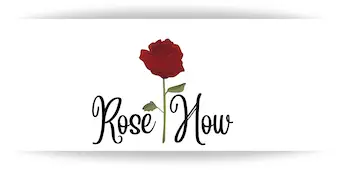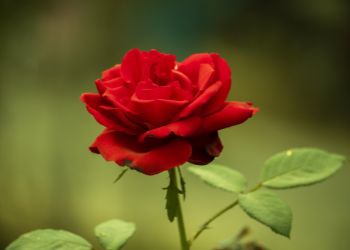As hybridization becomes the norm, there’s a constant flow of new types of roses added to the main rose categories being brought into the market all the time. These are commonly referred to as the main rose “classifications”.
But most of these fall into three main rose categories which I’ll discuss here.
Here’s a quick summary of the three main rose categories, and then we’ll dive into the main rose categories within each of these three categories.
It’s generally accepted that there are three main roses categories. Old Garden roses, Modern garden roses, and Species (or Wild) roses. These then break down into hybrid and lineage. There are over 150 primary species of roses, that are then distilled down to thousands of hybrid variations.
So when starting down the roses route, we ideally first need to understand the three main rose categories. That’s my main focus in the article.
Main rose categories – Types of roses
And this area is confusing, I’m not sure even experts agree on the exact rose categories, so I’m happy to be wrong on any that might better fit in other categories.
Old garden roses:
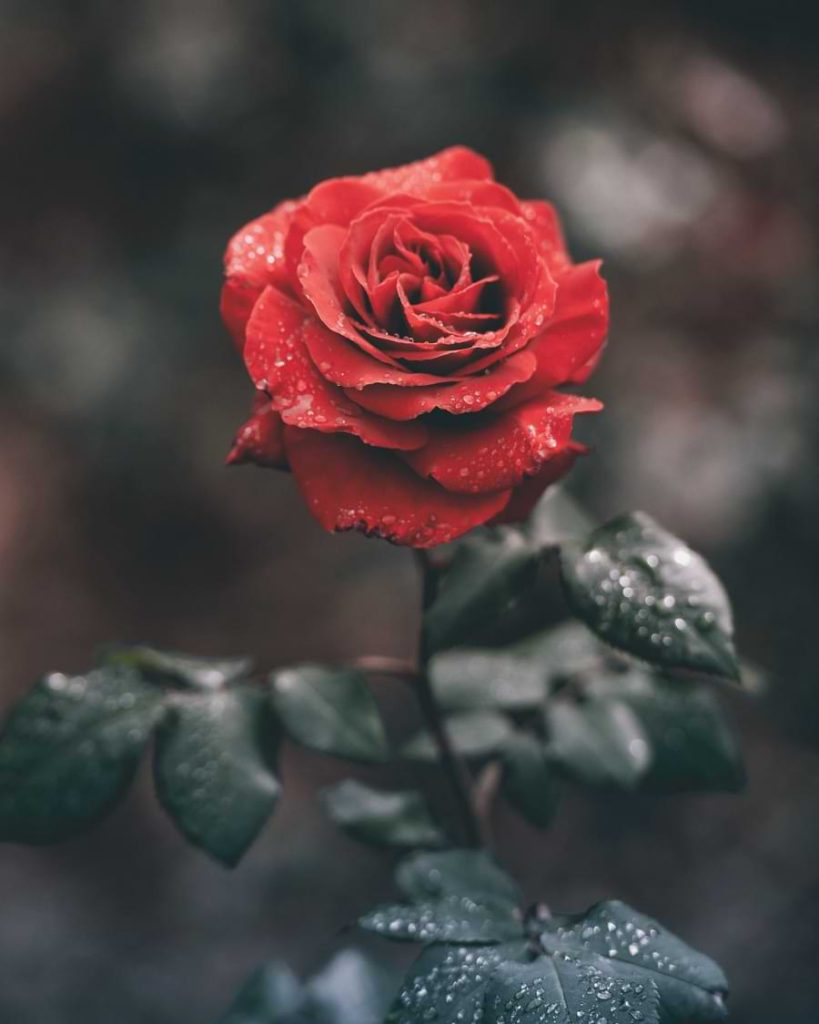
These are the roses that were around before 1867. They’re also commonly known as heritage, heirloom, or historic roses.
They are known for their classic shapes and often have more thorns. They’re fairly disease resistant and arguments still rage as to whether old garden roses (OGR) have a more intense fragrance than modern roses. I’ll stay out of that debate for now!
There are five main types of old garden roses: Alba, Bourbon, Damask, Gallica, and Moss.
- Alba roses – are some of the oldest cultivated roses. They’re often white or pale pink and have a light fragrance. They are native to Europe and Asia. They were introduced to England in the early 1600s. Alba roses are usually white or pale pink and have a strong fragrance.
- Bourbon roses – are named for the island of Bourbon, now called Réunion. They were introduced to Europe in the early 1800s. These roses are often very fragrant and come in a variety of colors including pink, red, and white.
- Damask roses – have been grown since ancient times. They’re thought to be the original rose from which all other varieties have been derived. Damask roses are usually deep pink or red and are very fragrant.
- Gallica roses – are native to Europe and Asia. They were introduced to England in the early 1600s. Gallica roses are usually a deep purple or red and have a light fragrance.
- Moss roses – are named for the moss-like growth on the flowers and stems. Moss roses are a type of gallica rose and were introduced to England in the late 1600s. They’re usually a deep pink or red and have a light fragrance.
Popular old garden roses
Some popular old garden roses include the Alba rose, Damask roses, Gallica roses, Moss roses, Bourbon roses, Noisette roses, Portland roses, China roses, and Tea roses.
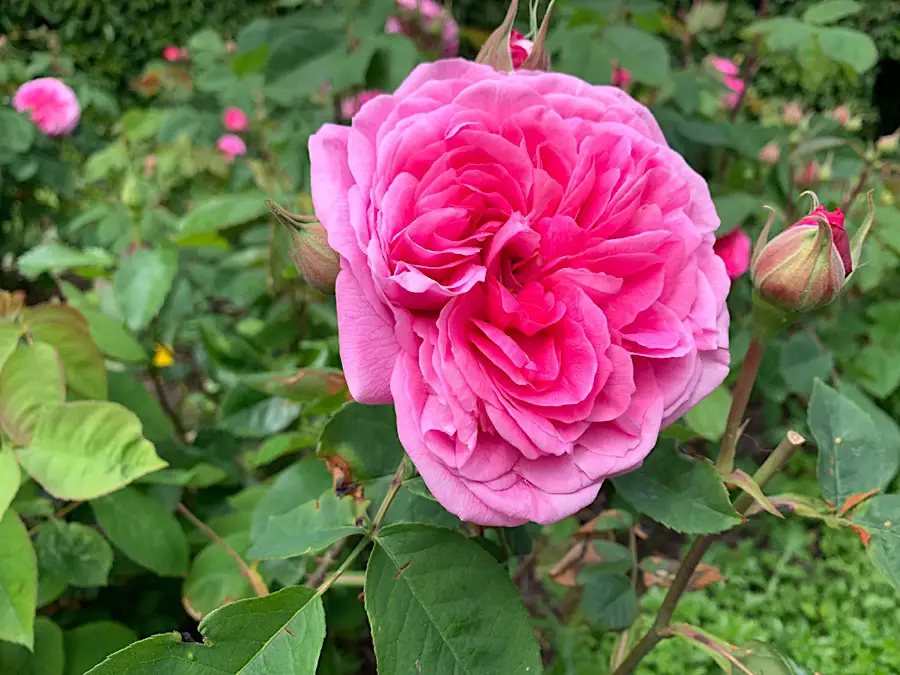
Modern garden roses
New, or modern garden roses are bred to have more flowers, be more disease resistant, and have a longer blooming season than old garden roses.
Modern garden roses are difficult to categorize because much of their ancestry is rooted in the category of roses called old garden roses.
Modern garden roses can be further divided into four subcategories:
- Hybrid Teas – Hybrid tea roses are the most popular type of rose. They are characterized by large, well-formed flowers that are borne singly on long stems.
- Floribundas – Floribunda roses are similar to hybrid teas, but have a more compact growth habit and produce clusters of small flowers.
- Grandifloras – Grandifloras are a cross between hybrid teas and floribundas. They have large flowers of hybrid teas but are arranged in clusters like floribundas.
- Climbing Roses – Climbing roses are vigorous growers that can be trained to climb walls, trellises, or other structures.
Popular modern garden roses
Some popular modern garden roses include the Hybrid Tea rose, the Floribunda rose, Grandiflora rose, Polyantha rose, and Miniature roses.
To get a more in-depth view on each of these, check out my articles on each of the above:
There are also cross-comparisons, like reading about Florribunda vs Grandiflora, or Rambler rose vs Climbing roses
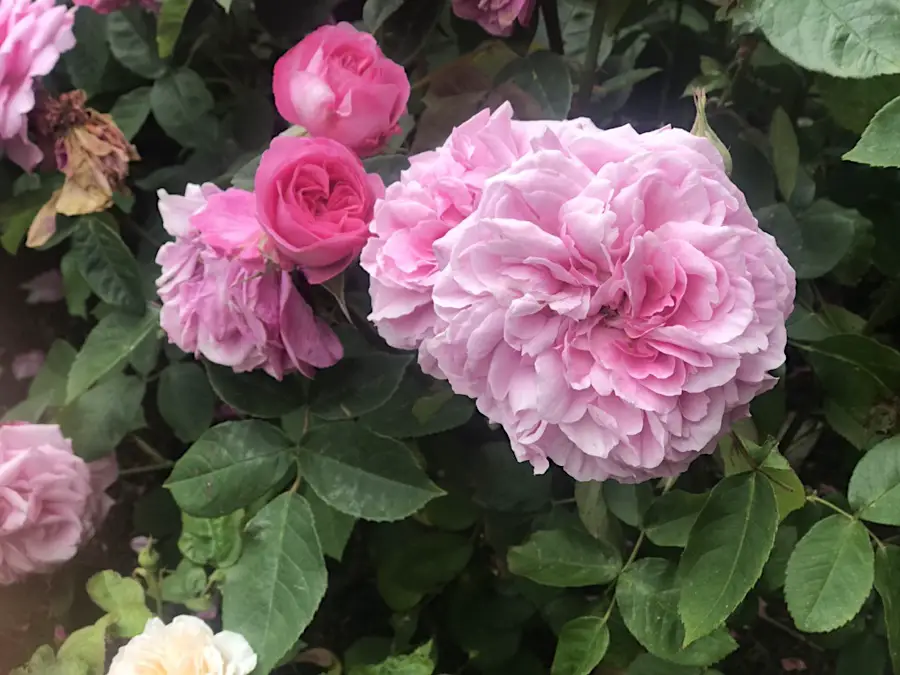
Species (wild) roses
Wild roses are the ancestors of all newly cultivated roses.
The botanical term for any wild rose is “species rose,” which means a species that grows naturally without the assistance of man. It’s a genuine “wildflower” because it comes from natural seed and plant propagation.
There are over a hundred of them, a number that is native to North America, others from the Orient and Europe.
All of these genuine wild roses will have exactly five petals and are single roses. They’re most commonly pink, with a few whites and reds, and only a few of them will range towards a yellow hue.
The category of wild roses are well known for their large, often fragrant flowers, and are generally categorized into a few main categories according to their growth habits.
Main categories of wild roses
The main rose categories of wild roses (Genus Rosa) have been hotly disputed over the years, and arguments continue as to the exact number, with claims of up to 350 species.
So I’d generally refer to the Wikipedia resource for understanding more about how wild roses break down into their further subcategories and true species.
- Rosa acicularis – “wild rose”, occurring in Asia, Europe, and North America
- Rosa arkansana – “wild prairie rose”, native to a large portion of central North America
- Rosa canina – “wild rose” or “dog rose”, is a climbing rose species that is native to Europe, northwest Africa, and western Asia
- Rosa virginiana – “Virginia rose”, native to North America
- Rosa woodsii – “wild rose” native to the sagebrush steppe, located in the Great Basin of North America
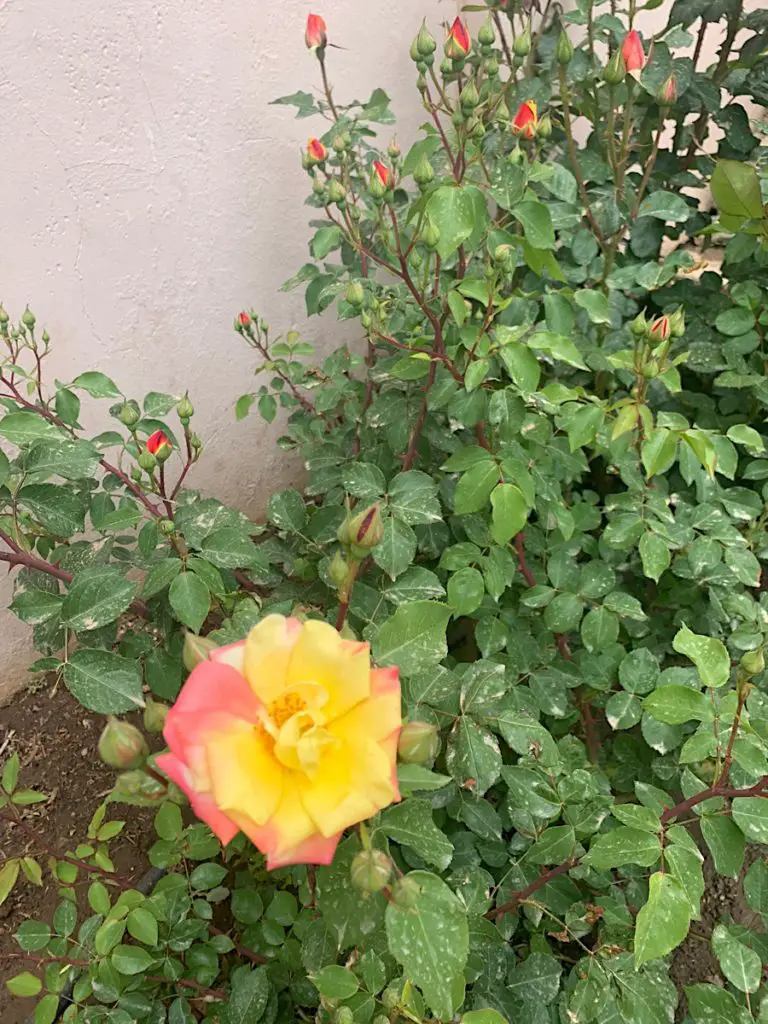
So that’s a roundup of the three main rose categories, so now you might be wondering which type of rose is best for you?
That partly depends on what effect you’re going for in your garden. If you want a classic, old-fashioned look, go for an old garden rose.
If you’re more into the modern, contemporary style, then a modern garden rose would be a better choice. And if you’re looking to add a touch of a rustic scene to your yard, wild roses are perfect for that.
Now that you know a little more about the different rose categories, you can make a better decision on which one is best for you. You can learn more info on these types by reading more about the types of roses.
Here are some tips on what you need to consider when choosing the best type of rose for your garden.
How to choose the right rose types
Choosing from these three rose categories – the Old Garden Roses, Modern Garden Roses, and Wild Roses – is the first step.
Even beyond that, and as part of that process, choosing the right rose can be tricky.
But it’s important to pick a rose that will thrive in your garden.
Here are a few steps to choosing the right rose for you:
- Consider the climate you live in and pick a rose that is suitable for that climate. Roses are usually classified as either cool-season or warm-season plants. Cool-season roses can tolerate frost and some snow, whereas warm-season roses will not survive in cold temperatures.
- Think about the amount of sun and water your garden gets and choose a rose accordingly.
- Think about your area size in your garden, and whether you want a climbing rose, or a bush rose. And consider how many can you feasibly grow in your designated rose bed.
- Consider height and supporting structures. Rose bushes come in many different shapes and sizes. Some are low-growing groundcover roses, while others can reach up to 12 feet tall. There are also miniature roses, which are perfect for small gardens or as potted plants.
- Take into account the soil type you have and any adjustments you might need to make to reach an ideal pH balance and the right nutrients.
- If you’re looking for a low-maintenance rose, opt for a modern garden rose.
- On the other hand, if you’re looking for a more traditional rose, go for an old garden rose.
- Look through a number of varieties that fit the above categories and find one that appeals to you.
- If you’re looking for a plant that is truly wild, choose a wild rose.
- Just remember, you don’t need to necessarily stick to just one, try planting a mixture of different roses to get the best results and understand your favorite ones.
- Consider what companion plants you need to complement your roses.
Here’s more about how much sun roses need. As well as when to water roses.
Choosing the right rose for your climate
I’m going to focus on this part a little more, as it’s quite important that you select a rose that is designed to thrive in your climate.
The last thing you want is to struggle to grow roses and make it hard for yourself.
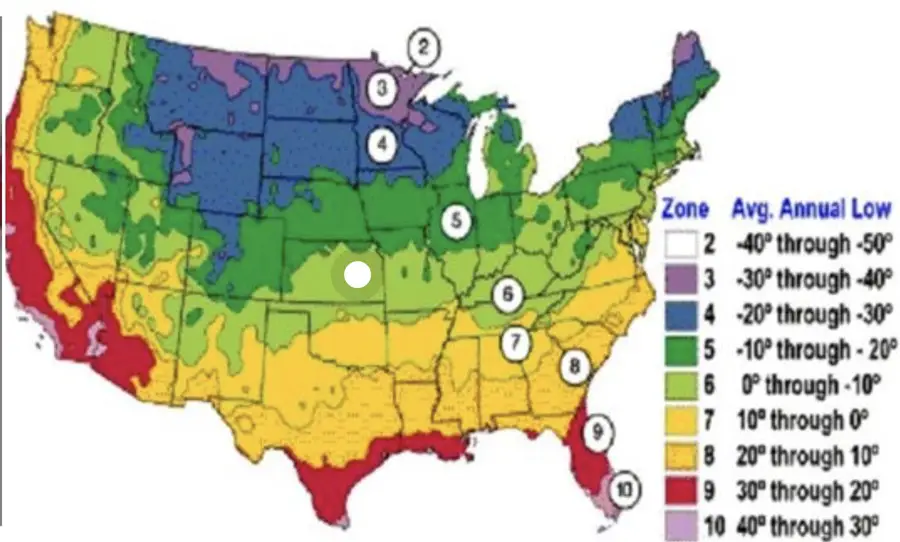
- If you live in an area with a temperate climate, then any type of rose will likely do well.
- However, if you live in an area with a hot climate, you’ll need to be more careful in choosing a rose. Opt for roses that are heat tolerant or have been bred specifically for hot climates.
- For cold climates, you’ll need to choose roses that are winter-hardy.
- Check the USDA zone map, often roses you purchase will provide the ideal zones needed for them to thrive.
Now that you know the basics, it’s time to get out there and start searching for your forever rose!
Rose categories ~ More roses help 🌹
I hope this post has given you a sufficient overview of the main rose categories.
Also, be sure to check out my rose care resources and tools for more help on making roses a wonderful part of your garden.
Here are some further related posts you might be interested in:
Latest Posts
- The Meaning of Red Roses: Love, Lore, Relationships, and More
- Where Do Roses Grow? Locations, Climate, and Requirements
- My Knockout Roses Look Terrible! Here’s the Problem! [Fixed]
- Best Pots for Roses: Types, Pros, and Cons, Which Is Best
- Can Climbing Roses Grow in Shade? Yes, Grow These Two!

Hi, I’m Michael. My passion for roses was sparked a few years ago after visiting a dedicated community rose garden. So Rosehow.com represents my take, my learnings, and my help for anyone looking to grow, be proud of, and harvest roses.
